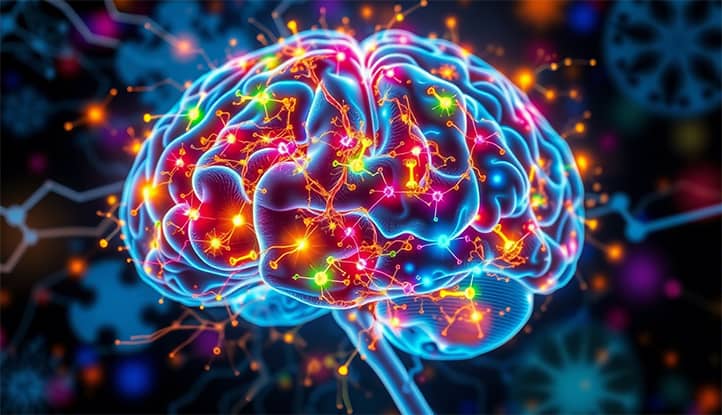Imagine that your brain is not a frozen, unchanging organ, but a living, dynamic system capable of restructuring, adapting, and developing throughout your life. This amazing property is called neuroplasticity – the brain’s ability to change its structure and function in response to experience, learning, and even injury.
Just a few decades ago, science believed that the adult brain was rigidly “programmed”: neural connections were fixed, and damaged areas could not recover. However, today we know this is not true. The brain possesses astonishing flexibility: it can compensate for lost functions, master new skills, and rewrite old habits, like clay that can be endlessly reshaped.
Why is this discovery so important? It revolutionizes our understanding of human potential. If in the past people resigned themselves to the idea that, for example, movement or speech might never recover after a stroke, or that learning becomes harder with age, we now know: the brain is capable of more. Neuroplasticity underlies rehabilitation after injuries, helps overcome anxiety disorders, and even allows elderly people to learn new professions.
A striking example is the stories of stroke survivors. Until recently, it was believed that if the area of the brain responsible for hand movement was damaged, the person would never regain use of it. But thanks to neuroplasticity, neighboring regions take over the lost functions, and through persistent training, mobility returns.
The same happens when mastering complex skills: when a London taxi driver memorizes the maze of streets, their hippocampus (the brain region responsible for memory) literally grows in size. These examples prove: our brain is not static—it constantly changes in response to how we use it. And this is not magic, but a natural mechanism that can be consciously developed.
Neuroplasticity is both hope and a challenge. Hope, because it means we are not prisoners of our genetics or age. A challenge—because change requires effort. But most importantly, we now know: the limits of our brain are defined only by how much we are willing to unlock them.
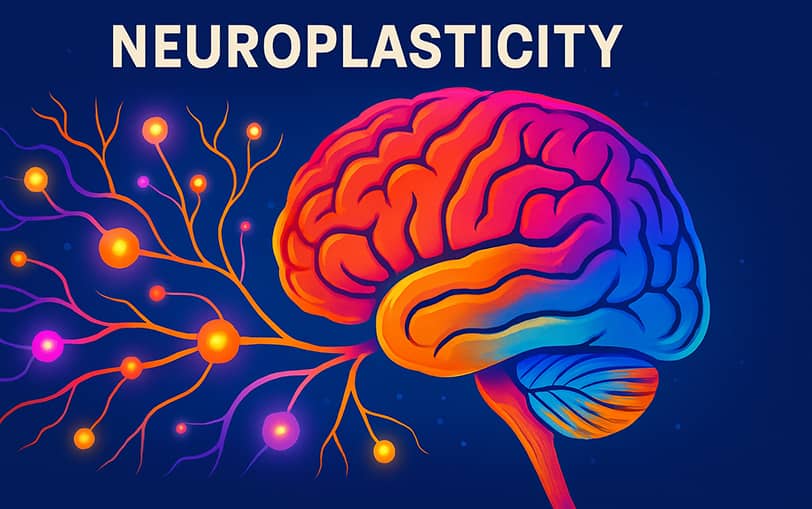
What is neuroplasticity?
We often hear phrases like “People can’t change” or “After 30, new habits don’t form.” But modern neuroscience completely debunks these myths. Our brain is not a static computer with fixed programs, but a living, constantly evolving system. This amazing property—the brain’s ability to restructure in response to experience—is called neuroplasticity.
This phenomenon explains why some people recover from severe traumatic brain injuries, while others learn foreign languages at 70. Neuroplasticity is scientific proof that we can consciously change our brain—and therefore, our lives. But how exactly does it work? Let’s break it down.
Scientific Definition
At a basic level, neuroplasticity is the ability of neurons (nerve cells) to form new connections and modify existing ones. Imagine the brain as a giant city where neurons are houses, and the connections between them are roads. In childhood, this city sees many new streets and highways. In adulthood, the process slows but doesn’t stop: old roads can expand, and new routes can be built when needed.
The key mechanism here is described by Hebb’s rule: “Neurons that fire together, wire together.” When we repeat an action multiple times (e.g., learning to play the guitar), the corresponding neural circuits strengthen. Conversely, unused connections gradually weaken (this is called “synaptic pruning”).
Types of Neuroplasticity
Neuroplasticity manifests in different ways. Scientists distinguish two main types:
a) Structural neuroplasticity (changes in synapses and neurons)
These are literal physical changes in the brain:
- Formation of new dendrites (neuron branches)—like a tree growing extra limbs.
- Increase in the number of synapses (connections between neurons)—making brain pathways more efficient.
- In rare cases – even the birth of new neurons (mostly in the hippocampus).
Example: In musicians who play an instrument for years, the brain regions responsible for finger motor skills become noticeably denser.
b) Functional neuroplasticity (reallocation of tasks between brain regions)
If one brain area is damaged, others can take over its functions:
- After partial brain removal in children (e.g., for epilepsy treatment), the remaining regions compensate for the loss.
- In blind people, the visual cortex repurposes itself to process tactile or auditory signals.
Example: When a person loses an arm, the brain area that controlled it gradually “retrains”—for example, it starts managing facial movements.
How do London taxi drivers memorize the city map?
One of the clearest proofs of neuroplasticity is the famous study of London taxi drivers. To obtain a license, they must perfectly memorize over 25,000 streets and tens of thousands of landmarks—a process that takes 3-4 years of cramming.
Scientists found that in such taxi drivers:
- The hippocampus (responsible for spatial memory) significantly increases in volume.
- The longer the driver’s career, the more pronounced the changes—but after retirement, the hippocampus gradually shrinks.
This proves: the brain physically grows when intensively used and “shrinks” when certain skills are no longer practiced.
Neuroplasticity is not an abstract theory but a daily reality. Every book read, every new skill, and even our way of thinking literally remolds the brain. In the next section, we’ll explore how to apply this knowledge in everyday life.
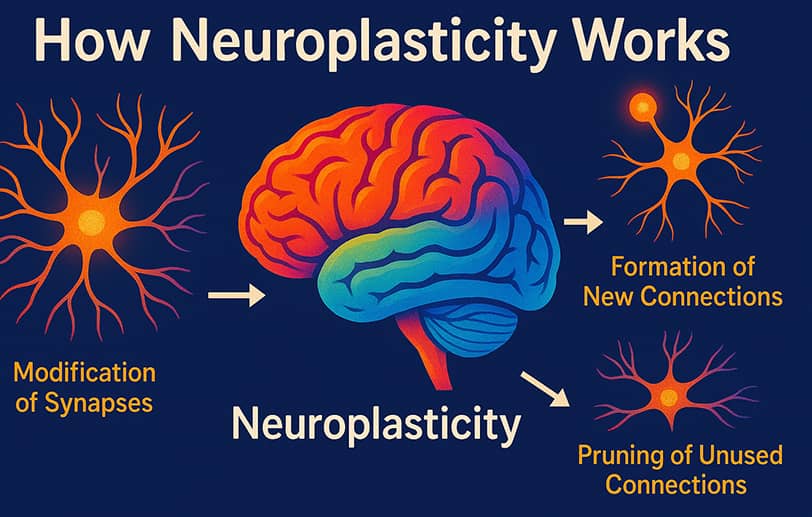
How Does Neuroplasticity Work?
The human brain is not a static organ but a dynamic system that constantly restructures itself based on our experiences. It’s like how a GPS automatically plots new routes when familiar roads are blocked. But how exactly do these amazing transformations happen? Why are some skills easy to learn while others require years of practice? Let’s break down the mechanisms that make our brain so flexible and adaptive.
Neuroplasticity isn’t magic—it’s a complex biological process that can be observed at different levels, from individual neurons to entire brain regions. Understanding these mechanisms gives us the key to consciously managing our abilities—from learning new skills to breaking bad habits. Let’s explore the core principles of neuroplasticity.
“Neurons that fire together, wire together” (Hebb’s Rule)
This is the fundamental principle of how our brain works, formulated by Canadian psychologist Donald Hebb back in 1949. Imagine neurons as people at a party. When two people constantly interact, their bond strengthens. Similarly, when neurons activate simultaneously many times, the connection between them becomes stronger.
At the biochemical level, this happens due to:
- An increase in neurotransmitters (chemical “messengers” between neurons).
- Growth of new dendritic spines (microscopic protrusions that improve cell-to-cell contact).
- Formation of additional synapses (connections between neurons).
Fun fact: This is why associative learning (when we link two events) happens so naturally. For example, if you always drink coffee while reading the news, over time, just seeing the cup will trigger the urge to check your feed.
The Role of Repetition and Practice (Forming Habits)
Repetition is the “fuel” for neuroplasticity. Every repetition of an action:
- Strengthens the myelin sheath around nerve fibers (like insulation on wires), speeding up signal transmission by 100 times.
- Makes neural connections more stable.
- Gradually shifts the skill from conscious control to automatic mode.
The numbers speak for themselves:
- 300–500 repetitions—to form a simple motor skill.
- 3,000–5,000 repetitions—for complex actions (e.g., a professional tennis stroke).
- 10,000 hours—to become an expert in a field (a rule popularized by Malcolm Gladwell).
But there’s an important nuance: not all repetitions are equally effective. Mechanically performing the same action without improvement yields weak results. The greatest neuroplasticity comes from practice with gradual task progression.
The Importance of Attention and Mindfulness
The brain conserves its resources and won’t restructure itself for no reason. To trigger neuroplasticity, you need:
- Conscious attention to what you’re doing.
- Emotional engagement (the more important the action is to you, the faster learning occurs).
- Feedback (understanding mistakes and correcting them).
Research shows:
- When learning piano mindfully, changes in the motor cortex happen 2–3 times faster.
- Meditation (which trains attention) increases prefrontal cortex thickness by 5–8% in 8 weeks.
- The “superlearning” effect occurs when a person is fully immersed in the process (a flow state).
Example: Learning to Play the Piano
Let’s trace the entire neuroplasticity process with a concrete example. When a person starts learning guitar:
- First few days: The brain activates many unnecessary areas (like a beginner trying to engage all muscles at once).
- After 2 weeks: Core neural pathways for basic chords form.
- After 3 months:
- Gray matter thickens in the motor cortex.
- Interhemispheric connections improve (especially in those playing complex pieces).
- After a year:
- Professional musicians show a 15–20% increase in corpus callosum size.
- Perfect pitch develops (if specifically trained).
But the most amazing part? These changes happen at any age. A 60-year-old beginner who practices regularly will show the same neuroplastic effects as a 20-year-old—just slightly slower.
Practical Takeaway: Neuroplasticity follows clear biological laws. Knowing them, we can:
✓ Plan learning more effectively.
✓ Form useful habits faster.
✓ Consciously “reprogram” our brain.
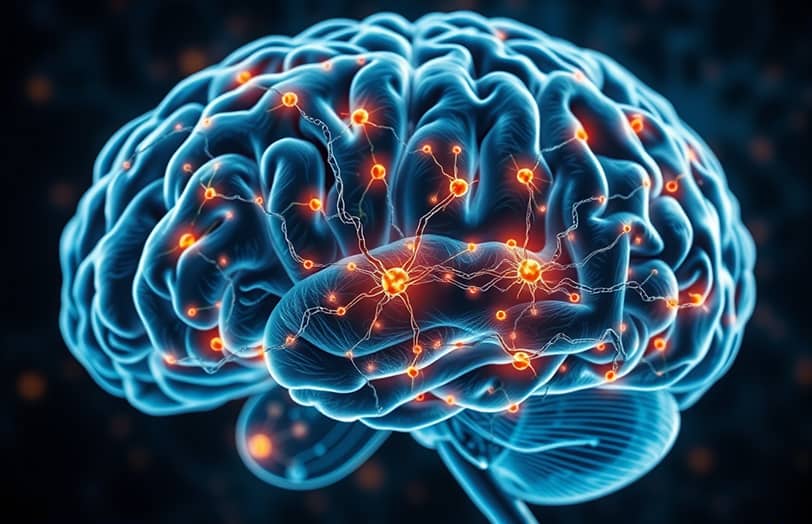
Neuroplasticity in Everyday Life
We often take our brain’s functioning for granted, rarely considering that each day is an endless process of fine-tuning neural connections. Surprisingly, the brain’s ability to restructure affects virtually every aspect of our lives—from how quickly we learn new skills to how successfully we overcome life’s crises. Neuroplasticity isn’t just an abstract scientific concept but a real mechanism working inside you right now—as you read these lines, sip your morning coffee, or learn a new route to work.
What’s even more important is that we can consciously use the principles of neuroplasticity to improve our quality of life. Understanding how this mechanism works allows us to learn faster, recover more effectively from injuries, break bad habits, and even reshape our thinking.
Learning New Things (Languages, Sports, Professions)
When an adult decides to learn a foreign language, remarkable changes occur in their brain:
- First few weeks: The prefrontal cortex is primarily activated (conscious memorization).
- After 3-6 months: Specialized neural networks for the new language form.
- At fluency level: Language centers begin resembling those of a native speaker.
Practical tips for accelerated learning:
- Alternate activities (reading + listening + speaking).
- Study before sleep—this improves information consolidation.
- Use emotionally charged material (songs, movies).
In sports, neuroplasticity is especially evident:
- Gymnasts show an enlarged somatosensory cortex.
- Soccer players develop better peripheral vision.
- Even mental training (visualization) provides 50-70% of real practice’s effect.
Recovery After Injuries (Post-Stroke Rehabilitation)
The brain has an astonishing capacity for self-repair:
- The most active restructuring occurs in the first 3 months after a stroke.
- Undamaged areas take over functions of lost regions.
- Intensive rehabilitation can yield improvements even years later.
Real-life examples:
- If Broca’s area (speech center) is damaged, the right hemisphere may assume its functions.
- After losing an arm, the corresponding brain region “repurposes” to control other body parts.
- In children with cerebral palsy, regular training can create new motor pathways.
Effective rehabilitation methods:
- Mirror therapy (for paralysis).
- Constraint-induced therapy (forcing use of the affected limb).
- Virtual reality to stimulate neuroplasticity.
Breaking Bad Habits (How the Brain “Unlearns” Addictions)
Habit formation and elimination are direct results of neuroplasticity:
- Addiction creates ultra-strong neural pathways.
- Quitting requires not just willpower but physical brain restructuring.
- Complete “fading” of old connections takes 3 to 12 months.
How to speed up the process:
- Replace old habits with new ones (smoking → breathing exercises).
- Avoid triggers for the first 3 months (when connections are most plastic).
- Use mindfulness techniques to reprogram reactions.
Interesting fact: In former smokers, full normalization of the dopamine system takes 2-3 years, but major improvements are noticeable within 6 weeks.
Mental Health (Cognitive Behavioral Therapy and Rewiring Thought Patterns)
Neuroplasticity is the foundation of modern psychotherapy:
- CBT literally “rewrites” pathological neural circuits.
- 12 weeks of depression therapy alter activity in the limbic system.
- Meditation increases cortical thickness in areas responsible for self-control.
Specific changes:
- In OCD, activity decreases in the caudate nucleus.
- In anxiety disorders, connections between the amygdala and prefrontal cortex strengthen.
- After PTSD therapy, the hippocampus may grow by 5-8%.
Simple daily techniques:
- Gratitude journaling (shifts focus).
- “Reappraisal” technique for emotional regulation.
- Mindful breathing to reduce anxiety.
Neuroplasticity isn’t just a scientific concept—it’s a tool we can use every day. By understanding how our brain works, we gain the power to consciously guide its development, turning everyday actions into powerful catalysts for positive change. Remember: the brain can change at any age, and these changes are always in our hands (or rather, in our neurons).
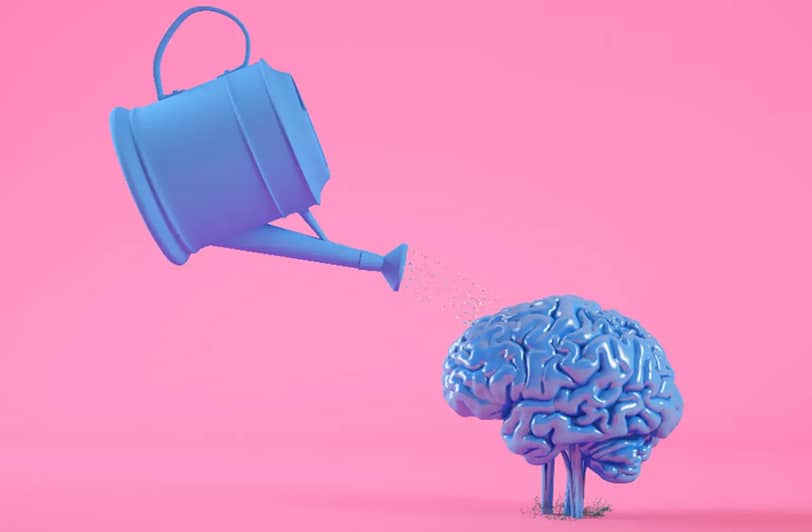
How to Develop Neuroplasticity?
Our brain is like a muscle—the more actively we train it, the stronger and more flexible it becomes. But unlike physical exercises that target specific muscle groups, “workouts” for the brain require a comprehensive approach.
The good news: each of us can use simple and accessible methods daily to enhance neuroplasticity. These techniques don’t require special equipment or drastic lifestyle changes, but with regular practice, they can literally reshape the architecture of our thinking.
Cognitive Training
The brain develops when solving unconventional tasks. Effective methods:
- Conscious reading (30 minutes a day of complex texts followed by retelling):
- Activates 7 key brain areas.
- Improves interhemispheric connections by 17-23%.
- Puzzles and strategic games:
- Chess increases neuron density in the parietal lobe.
- Math problems strengthen the prefrontal cortex.
- Optimal load: 3-5 sessions of 25 minutes per week.
- Learning new things:
- Mastering a musical instrument creates up to 10,000 new connections per month.
- Foreign languages slow age-related brain changes by 4-5 years.
- Golden rule: Step out of your comfort zone every 2-3 weeks.
Physical Activity
Movement is a powerful stimulator of neurogenesis:
- Aerobic exercise (running, swimming, cycling):
- Increase the hippocampus by 1-2% per year.
- Boost production of BDNF (neuron growth protein) by 50-70%.
- Just 150 minutes per week is enough.
- Strength training:
- Improve cognitive function in older adults by 30-40%.
- Reduce dementia risk by 20-25%.
- Coordination exercises (dancing, tennis, yoga):
- Strengthen the corpus callosum.
- Develop spatial thinking.
- Just 20 minutes a day shows noticeable effects.
Meditation and Mindfulness
Mindfulness practices are “gymnastics” for emotional intelligence:
- Brain changes after 8 weeks of practice:
- 3-5% thickening of the cortex in attention zones.
- 10-15% reduction in the amygdala (fear center).
- Stronger connections between hemispheres.
- Simple techniques for beginners:
- Focused breathing (10 minutes morning and evening).
- Body scanning (before sleep).
- Mindful walks (without a phone).
- Effects:
- 35-40% reduction in stress.
- 25-30% improvement in concentration.
- Increased learning speed.
Healthy Sleep
Sleep is neuroplasticity’s greatest “ally”:
- Sleep stages and their roles:
- Deep sleep: Memory consolidation (transfer from short-term to long-term).
- REM phase: Emotional processing and creative ideas.
- Cycles should be complete (5-6 cycles per night).
- How to improve sleep quality:
- Maintain circadian rhythms (consistent sleep and wake times).
- Bedroom temperature of 18-20°C (64-68°F).
- Complete darkness (no blue light 1 hour before bed).
- Consequences of sleep deprivation:
- 30-40% reduction in neuroplasticity.
- Impaired learning ability.
- Accumulation of toxic proteins in the brain.
Proper Nutrition
“Fuel” for neuroplasticity:
- Key nutrients:
- Omega-3 (fatty fish, flaxseed oil): Building blocks for neurons.
- Antioxidants (berries, greens): Protection against oxidative stress.
- B vitamins (eggs, liver): Nervous system support.
- Healthy eating habits:
- Mediterranean diet (improves cognitive function by 20-25%).
- Intermittent fasting (stimulates brain cell cleansing).
- Sufficient water (dehydration reduces brain performance by 15-20%).
- Harmful foods:
- Excess sugar (disrupts synaptic plasticity).
- Trans fats (impair brain blood supply).
- Alcohol (reduces neurogenesis by 30-40%).
One-Month Practical Plan
- Week 1: Add 15 minutes of reading + 3 walks (30 minutes each).
- Week 2: Introduce 10-minute morning meditation.
- Week 3: Optimize sleep schedule (bedtime before 11 PM).
- Week 4: Revise diet (add omega-3 and antioxidants).
Golden rule: Consistency matters more than intensity. Even small but regular changes create a cumulative effect that can fundamentally transform your brain’s function within months. Remember—neuroplasticity works at any age, and it’s never too late to start.
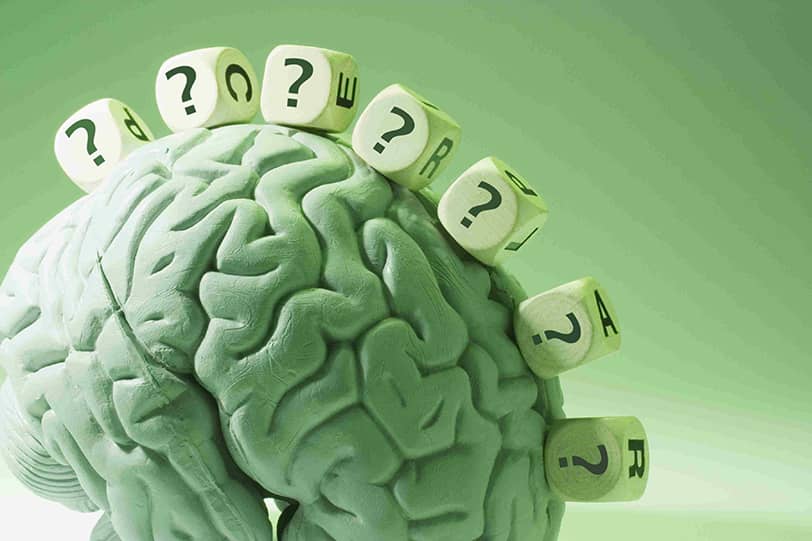
Myths About Neuroplasticity
There are many misconceptions surrounding neuroplasticity that prevent people from fully unlocking their brain’s potential. These myths often become psychological barriers—we use them to justify our inability to change, learn new skills, or break bad habits. Such false beliefs are particularly harmful for older adults, who may genuinely believe they’re “too old to learn.”
Debunking these myths isn’t just about gaining interesting scientific knowledge—it’s about opening new doors for personal growth. Modern neurobiological research proves that our brains retain the ability to change throughout life, and genetics are not a sentence but merely a starting point. Let’s examine the three most common myths about neuroplasticity and see what science has to say.
“The Brain Stops Changing After Age 25” — Why This Is False
This myth stems from outdated 20th-century beliefs when scientists did think brain development ended in early adulthood. However, modern research completely disproves this claim:
Scientific facts:
- Peak myelin production (insulating substance for neurons) does occur around 20-25 years, but the process continues until 40-45.
- Neurogenesis (birth of new neurons) occurs in the hippocampus throughout life in adults.
- A study of middle-aged London taxi drivers showed a 5-8% increase in hippocampal volume after 3-4 years of training.
Real-world examples:
- Learning new professions after 50 (career changes).
- Mastering foreign languages in old age.
- Stroke recovery in 60-70-year-old patients.
Why does this myth persist?
After 25-30, changes do require more effort and time, which many mistakenly interpret as “impossible.” In reality, the brain simply switches to a “smart economy” mode—it doesn’t waste resources on random changes but readily adapts with targeted effort.
“Genes Determine Everything”
While genetics do play a role in brain structure, their influence is often overstated. Neuroplasticity is precisely the mechanism that allows us to overcome genetic limitations:
How environment alters “genetic destiny”:
- Identical twins raised in different environments can have 20-30% differences in brain structure.
- Regular music practice can compensate for a genetic predisposition to poor hearing.
- Cognitive training reduces Alzheimer’s risk even in carriers of “bad” genes.
The “enriched environment” effect (animal studies):
Mice in stimulating environments (toys, mazes) had:
- 25% more neural connections.
- 15% larger brain volume.
- Twice better results in intelligence tests.
Practical takeaway: Genes set baseline parameters, but your actions and environment determine how your brain develops. This is especially crucial for people with hereditary risks of cognitive decline.
“Neuroplasticity = Instant Changes”
Pop psychology often creates the illusion that the brain can be “reprogrammed” in days. In reality, neuroplasticity is a gradual process requiring patience and consistency:
Time factors in neuroplasticity:
- Simple skills: 3-8 weeks of regular practice.
- Complex abilities: 6-18 months (e.g., language fluency).
- Deep mindset shifts: 1-3 years (with a psychologist).
Why no “instant rewiring”?
- Physical changes in neurons take time (2-3 weeks for new dendrites).
- The brain resists abrupt changes (homeostasis principle).
- Old neural pathways don’t vanish—they’re overridden by new ones.
How to achieve lasting change:
- “Small steps” method (1% improvement daily).
- Alternating learning/rest cycles (50/10 minutes).
- Regular repetition (80/20 rule: 20% effort yields 80% results).
Your brain is always ready to change—but these changes demand consistent effort. Like gym training, you can’t build muscles overnight, but regular workouts guarantee results. The most dangerous myth is believing “I can’t do it.” Neuroscience proves: anyone can, if they invest time and effort into developing their most vital organ.
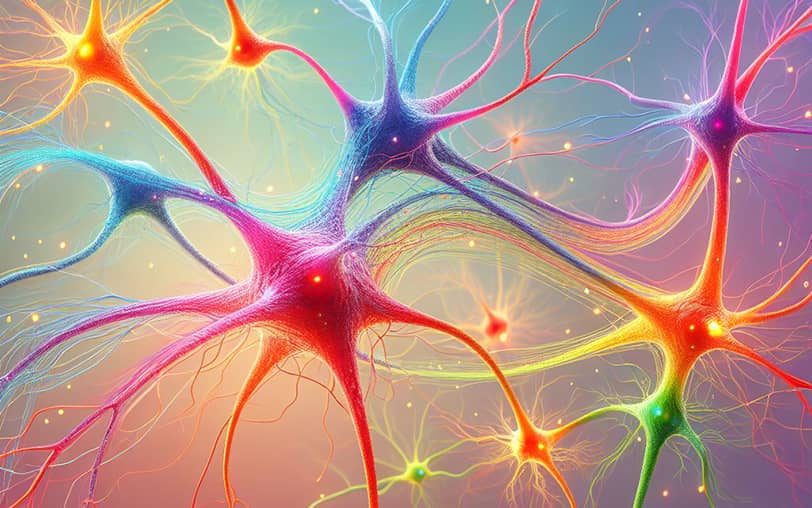
Conclusion
Neuroplasticity isn’t just a scientific discovery—it’s a revolution in understanding human potential. It shatters old myths about age limits and genetic determinism, granting us incredible freedom: the ability to grow smarter and more adaptable regardless of age or circumstances. Your brain isn’t a museum exhibit frozen in time but a living, dynamic system that constantly reshapes itself in response to your experiences, efforts, and even thoughts.
The key to unlocking this potential is deceptively simple yet challenging: a willingness to keep learning and step beyond comfort zones. Just as athletes maintain fitness through regular training, our brains need constant cognitive challenges, new experiences, and unconventional tasks. It’s in moments of struggle—facing the unknown, making mistakes—that the most intense neural restructuring occurs.
The most inspiring lesson of neuroplasticity? Your capabilities aren’t fixed. The brain isn’t a hard drive with limited memory or a pre-programmed computer. Want to learn a language at 50? Switch careers at 40? Break a decades-old habit? Neuroplasticity says: “It’s possible.” But remember—like a sculptor crafting a masterpiece, brain remodeling takes time, patience, and steady work.
The true miracle of neuroplasticity is that it turns daily actions—reading a book, exploring a new route, attempting an unfamiliar skill—into powerful tools for self-transformation. Each effort leaves a mark on your brain’s architecture. Though invisible day-to-day, like a tree’s growth, months and years of such efforts lead to astonishing metamorphoses. This is nature’s great gift: the lifelong capacity to change, adapt, and grow—proving that real limits lie not in genes or age, but in our readiness to believe in ourselves and persist.
